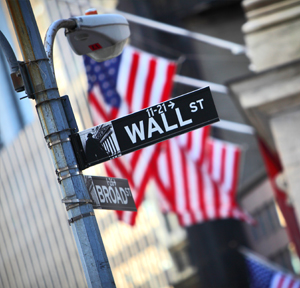Investment Strategies
SPAC Money-Raising Spree Prompts Warnings

The number of special purpose acquisition companies entering the market rose by more than four times in 2020 and the trend continues. There are starting to be a few warning noises about the process.
The money-raising flow of structures known as SPAC’s – special purpose acquisition companies – continues to grow, leading to a few warning noises.
These exchange-listed shell companies are expanding in number and value. Listings rose to 230 last year, with a total issue volume of $75.8 billion (source: EY). Those numbers are up from 60 listings in 2019, netting a total of $13.7 billion in proceeds. This isn’t only a US phenomenon – more deals are going on in Europe too.
Dealflow continues to be strong. Bloomberg today reported that Intel Corp chairman Omar Ishrak is planning to raise funds for SPAC targeting deals in the health technology sector. The report, quoting unnamed sources, said that Ishrak, who previously ran medical device giant Medtronic, could file public registration documents with the US Securities and Exchange Commission as soon as today. Ishrak is reportedly aiming to raise about $750 million to $1 billion for the SPAC.
This news service has been told that ultra-wealthy individuals, including those with family offices, have been involved in some of these SPAC deals, both on the corporate finance, money-raising side, and as investors. These entities have actually been around for a while. Some commentators urge market participants to be careful.
For example, in a recent editorial for the Wall Street Journal, Michael Klausner, a professor at Stanford Law School, and Emily Ruan, a management consultant in San Francisco, wrote that the SPAC trend was a bubble and could soon burst.
“We studied SPACs that completed mergers between January 2019 and June 2020 and found that, on average, they lost 12 per cent of their value within six months following the merger, while the Nasdaq rose roughly 30 per cent. Even with these drops in share price, the 20 per cent that the sponsor gets essentially for free provides a nice return on its investment. The sponsors of these SPACs enjoyed a return on investment of more than 500 per cent as of the end of 2020,” they wrote (source: WSJ, Jan. 6). “It is not a coincidence that sponsors and SPAC IPO investors who redeem their shares earn a high return, while shareholders who remain invested through the merger do poorly. The sponsors’ essentially free shares and the IPO investors’ free warrants and rights dilute the returns to investors. The shareholders who pay for their investments are, in effect, sharing the value of the merged company with others who did not.”
They continued: “Our study of SPACs that merged between January 2019 and June 2020 found that, at the time of their merger, most SPACs had less than $6.75 a share in cash but ascribed a $10 value to those shares when they merged.”
The COVID-19 pandemic has caused havoc, and there’s a thirst for new sources of capital as businesses try to re-open and in in some cases, get off the ground for the first time in the months ahead. The wealth management sector has in general done pretty well over the past 12 months as markets, fueled by central bank money printing, have held up. SPACs are a source of new capital, but as the data from the WSJ article suggests, not everyone is having an equally good ride with them.
As noted by Family Wealth Report just before Christmas, the winning formula for SPACs is that buyers get a 20 per cent stake in the financing vehicle at a low cost, which turns into a big stake in the target company after a merger. Sellers can go public without the hassles and restrictions of a traditional IPO. But, as FWR noted, it remains to be seen whether the SPAC structure will work in the US Registered Investor space, given the already-strong M&A market in the space.
Paul Bernstein, the vice chair of Venable LLP’s entertainment and media group, reckons that these SPACs have a short window over which to spend the cash.
“One of the oddities of SPAC-driven M&A activity is that SPACs generally have a two-year time limit in which to either put their cash to work in one or more acquisitions or return it to their public stockholders. This naturally creates a tremendous incentive for those running the SPACs (who typically own highly preferential “founders’ shares” in their SPACs) to close deals before the time limit is up,” he wrote in a recent commentary.
“When a SPAC raises money, it includes `Risk Factors’ in its prospectus in order to alert investors to certain dangers of buying the SPAC shares. The following text, quoted from a recent SPAC prospectus, should be music to the ears of potential acquisition targets: `The requirement that we complete our initial business combination within the prescribed time frame (i.e., two years) may give potential target businesses leverage over us in negotiating a business combination.’
“Imagine sitting across the negotiating table from someone who has $100 million of other people’s money in their wallet and – in a twist on Hitchcock’s distinction between suspense and surprise - both you and they know that the wallet will blow up on a certain day two years hence. The SPAC cannot conceal the date by which it must either spend its money or return it to stockholders, because that date is disclosed for the world to see in the SPAC’s public filings with the Securities and Exchange Commission.”